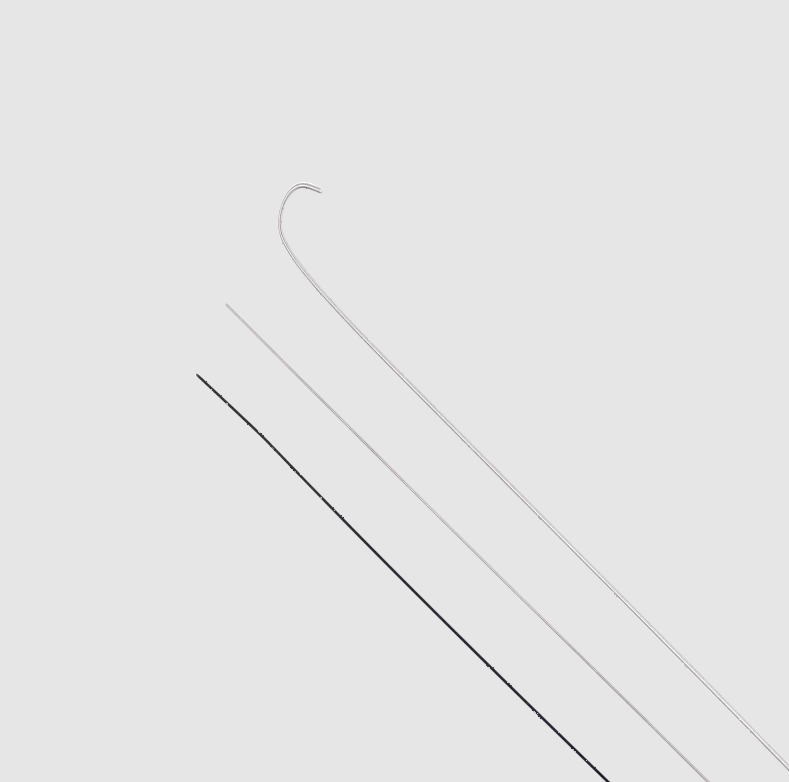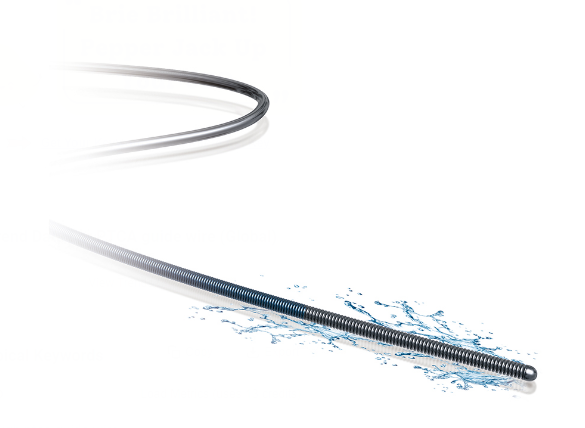Picture this: you’re in the middle of a high-stakes procedure, navigating the intricate and delicate maze of coronary arteries. The difference between a smooth operation and potential complications could hinge on a single tool—a PTCA guide wire. Though it may seem like a minor part of a larger process, choosing the right one can greatly improve patient outcomes, lower risks, and ensure a successful intervention. But how is this essential device making cardiac interventions safer and more efficient?

This post takes a closer look at PTCA guide wires, focusing on the advanced design and features of the Demax PTCA Guide Wire. Let’s see how it is redefining percutaneous transluminal coronary angioplasty (PTCA) and addressing some of the major challenges faced during these procedures.
Understanding PTCA and the Role of Guide Wire
PTCA, or percutaneous transluminal coronary angioplasty, is a minimally invasive technique used to restore proper blood flow in arteries narrowed or blocked by plaque buildup. The aim is to widen the arteries so the heart muscle can receive adequate blood supply. In this process, various specialized tools are used, among which the PTCA guide wire is indispensable.
Why the Guide Wire Is Critical in Coronary Procedures
The PTCA guide wire is the first device deployed to navigate the coronary arteries. Acting as a pathfinder, it enables other instruments, such as balloons and stents, to reach the targeted blockage. Without a high-quality wire, navigating the complex arterial network with the necessary precision becomes almost impossible, jeopardizing the effectiveness of the treatment.
The Importance of Selecting the Right Guide Wire
It’s not just about completing the procedure—it’s about doing it safely and effectively. A well-chosen wire can dramatically reduce complications, prevent vessel damage, and optimize outcomes. Its balance of flexibility, strength, and control makes all the difference. That’s why using advanced wires, like the Demax PTCA Guide Wire, can be a game changer for interventional cardiologists.
Unveiling the Features of the Demax PTCA Guide Wire
The Demax PTCA Guide Wire stands out for its precision-engineered design, addressing the needs of complex coronary interventions. What makes it so unique?
Stainless Steel Core Wire: The Backbone of Flexibility and Durability
A standout feature of the Demax guide wire is its stainless steel core. This structure offers impressive flexibility, allowing the wire to maneuver through the twisted and narrow pathways of coronary arteries. Durability is another key advantage—it ensures that the wire performs consistently, even after multiple adjustments during longer or more complicated procedures.
Flexibility is critical in PTCA since it allows for smooth navigation, but durability cannot be overlooked. The stainless steel core ensures that this wire holds up, even when repositioned several times, maintaining its structural integrity from start to finish.
Hydrophilic Coating: Gliding Through Vessels with Minimal Resistance
One of the biggest challenges in PTCA is safely advancing the wire through blood vessels without causing trauma. The Demax guide wire tackles this issue with a hydrophilic coating that significantly reduces friction. This smooth advancement helps prevent vessel injury, which is crucial for patient safety and minimizes the risk of postoperative complications.
This coating also speeds up the procedure, allowing for more efficient navigation through arteries. By reducing internal resistance, the wire moves with greater precision and control, making the intervention not only safer but also more effective.
Soft Tip Design: Prioritizing Safety During Navigation
A particularly valuable feature of the Demax PTCA Guide Wire is its soft tip. It ensures that vessels remain unharmed as the wire progresses through arteries. During PTCA procedures, these channels are often fragile and can be severely damaged by guidewires with rigid tips. Complications such as dissection or perforation may result.

The soft tip on the Demax guide wire reduces this risk, allowing for careful navigation through complex or narrow areas without causing harm. This is especially critical for high-risk patients or in cases where vessel walls are already compromised.
Tackling Common Challenges in PTCA Procedures
While PTCA is an essential treatment for coronary artery disease, it comes with its share of obstacles. Navigating heavily calcified arteries, finding the right path in tortuous vessels, and ensuring the accurate placement of stents or balloons are just a few of the issues interventional cardiologists face. Fortunately, innovative guide wires like the Demax PTCA model offer solutions to these challenges.
Navigating Tortuous Vessels: Precision and Flexibility
Coronary arteries often curve and twist, making it difficult for devices to pass through smoothly. Wires with poor flexibility or torque ability may struggle in such environments, increasing the risk of complications. Thanks to its stainless steel core and hydrophilic coating, the Demax guide wire excels in maneuvering through even the most complex arterial structures.
Treating Calcified Lesions: Retaining Shape and Performance
Calcified lesions, caused by hardened plaque, are another major challenge. These stiffened areas can resist treatment and make navigation difficult. The Demax PTCA Guide Wire’s combination of flexibility and durability enables it to pass through these rigid sections without losing effectiveness. Additionally, the wire’s high tip curvature retention ensures that it can be straightened and repositioned multiple times without deforming, crucial for navigating challenging lesions.
Ensuring Accurate Device Placement: Stability and Support
Accurate placement of devices like balloons and stents is vital for the success of the procedure. A wire that lacks stability can lead to improper placement, resulting in the need for additional interventions or even failure of the procedure. The Demax guide wire offers excellent support and retention of its tip curvature, providing the control necessary for precise placement and reducing the likelihood of complications.
Why the Demax PTCA Guide Wire Is a Game Changer
The Demax PTCA Guide Wire is more than just a tool; it’s revolutionizing the field of coronary interventions. Its combination of advanced features—including the stainless steel core wire, hydrophilic coating, and soft tip design—ensures flexibility, durability, and, above all, patient safety.
Intraoperative Control: Retention and Maneuverability
Demax guidewires feature high tip curvature retention and excellent torque capability. They provide interventional cardiologists with enhanced control during procedures. Navigating challenging arterial pathways or treating complex lesions requires tools that maintain their shape and provide reliable performance throughout the procedure.This guide wire delivers exactly that, ensuring consistent results.
Reducing Complications: Safety and Precision
By minimizing friction, lowering the risk of vessel trauma, and allowing for precise device navigation, the Demax PTCA Guide Wire helps to reduce the risk of serious complications like vessel perforation or dissection. This makes it an invaluable asset in achieving positive patient outcomes and preventing adverse events.
Supplier You Can Trust: Tianjin Demax Medical Technology Co., Ltd.
Tianjin Demax Medical Technology Co., Ltd. has a reputation for producing top-quality medical devices, and the Demax PTCA Guide Wire is no exception. The company’s commitment to innovation and patient safety is evident in the design and performance of this product.

Conclusion
In the world of delicate and complex coronary interventions, PTCA guidewires play a critical role in determining the success of procedures such as angioplasty. With its cutting-edge functionality, the Demax PTCA guidewire is at the forefront of making these procedures safer, more efficient, and less prone to complications. Whether you’re dealing with tortuous blood vessels, calcified lesions, or precise device placement. Each guidewire delivers the reliability and performance interventional cardiologists need to successfully meet the challenges of PTCA surgery.